If you’re considering starting an anti-inflammatory diet, or are simply curious about which foods cause inflammation and which foods don’t, then this guide is for you! You’ll find anti-inflammatory food lists for vegetables, fruits, grains, legumes, proteins, fats and more.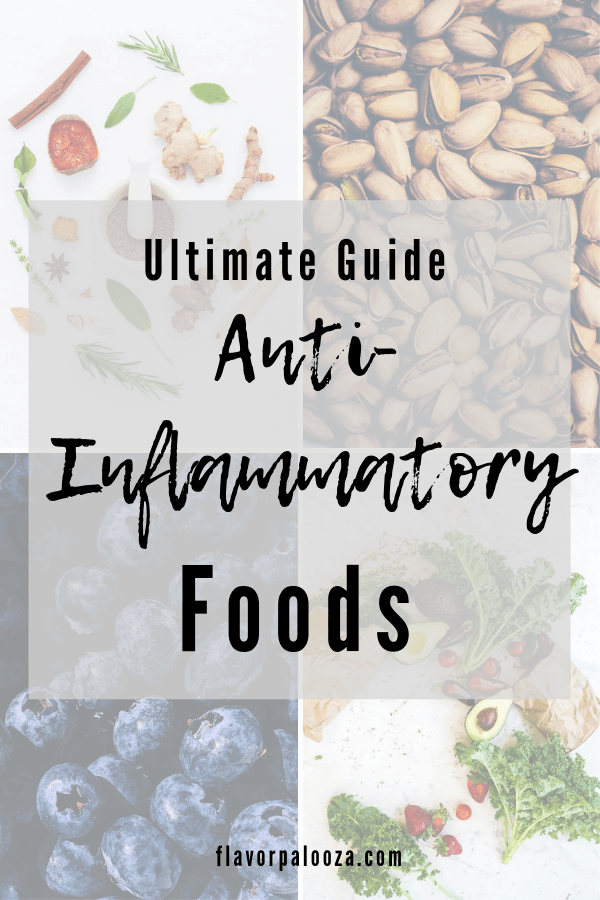
What is an Anti-Inflammatory Diet?
First thing’s first: You might be asking yourself what exactly an anti-inflammatory diet is. Maybe your doctor suggested you avoid foods that cause inflammation. Maybe you took to Google with a list of symptoms and decided to give an anti-inflammatory diet a try, to see if your symptoms clear up.
The good news is an anti-inflammatory diet isn’t really all that restrictive, as you’ll see in the anti-inflammatory foods lists below.
Essentially, an anti-inflammatory diet is about eating more real, whole foods and less processed foods, with the goal of reducing inflammation in the body.
Chronic inflammation is linked to a host of diseases and conditions, so an anti-inflammatory diet is really an overall, good diet for most people to consider, since at its core it’s a healthy, whole foods-oriented diet, with a general, balanced focus of “eat more good than bad.”
In many ways, it’s very similar to the popular Mediterranean diet.
So, what can I eat and what foods should I avoid on an anti-inflammatory diet?
Foods That Cause Inflammation
Omega-6 fatty acids are known to increase inflammation in the body. But, they’re also important for your body, so you shouldn’t cut them out entirely. Instead, it’s important to keep your omega-6 and omega-3 fatty acid intake in balance to better regulate possible inflammation.
Foods high in omega-6 fatty acids include:
- Meat
- Dairy products (like milk, cheese, and butter)
- Vegetable oils (like corn and safflower)
Again, it’s not about avoiding foods altogether, it’s more about being aware of what you’re eating, and sticking more to the 80/20 rule — more good than bad — and maintaining a balanced diet.
Other foods to limit include:
- sugar
- refined grains (like white bread)
- sugary beverages
- refined carbohydrates
- desserts
- processed snack foods
- alcohol
Now, here’s a list of what you should be mostly eating on an anti-inflammatory diet.
- Fruits and vegetables
- Whole grains
- Fermented foods
- Seafood, Tofu & Tempeh
- Bone broth
- Beans and legumes
- Good fats
- Spices and herbs
Note: If you don’t have time to make your own bone broth, pick up some Kettle & Fire Bone Broth!

Anti-Inflammatory Vegetables
Some of the best vegetables for fighting inflammation are tomatoes and green leafy vegetables, like spinach and kale. Below, find a quick, graphic list of more anti-inflammatory veggies!

Anti-Inflammatory Fruits
The big winners in the anti-inflammatory fruit category are strawberries, blueberries, oranges and cherries. But, there are many more healthful fruits you can enjoy on an anti-inflammatory diet.
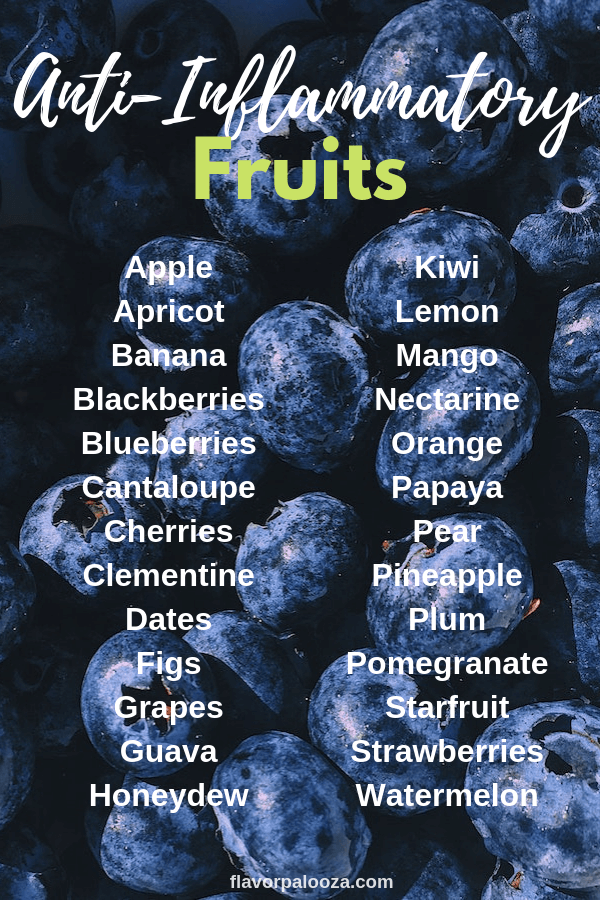
Anti-Inflammatory Grains
Whole and cracked grains like brown rice, wild rice, buckwheat, barley, quinoa, and steel-cut oats are excellent anti-inflammatory options.
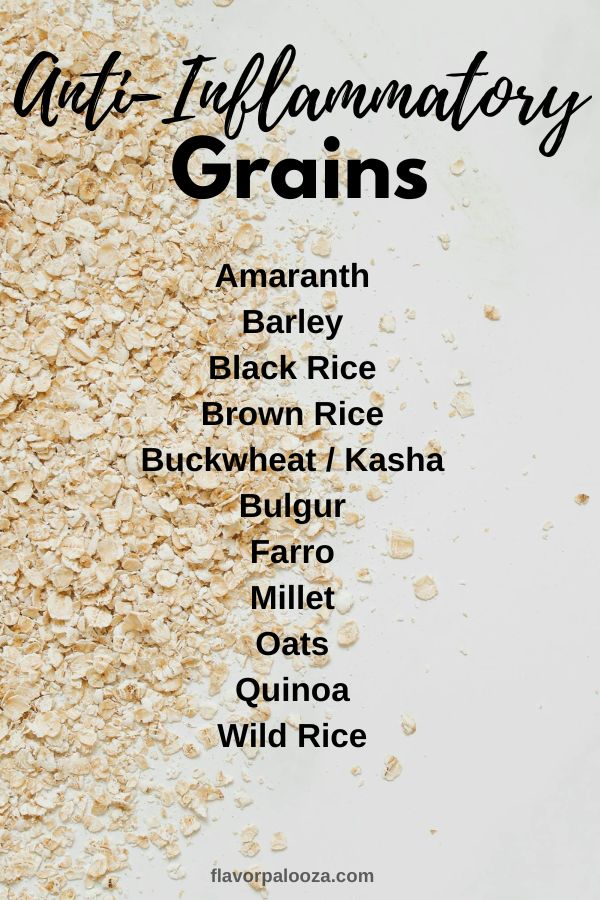
Anti-Inflammatory Starchy Vegetables
These starchy veggies are high in fiber, naturally gluten free and high in essential vitamins and minerals. They’re excellent additions to an anti-inflammatory diet, and are great carb replacements for breads and pastas.

Anti-Inflammatory Beans & Legumes
Beans and legumes are low-glycemic-index foods that offer a lot of fiber and protein. Add a couple of servings per day to your anti-inflammatory diet.
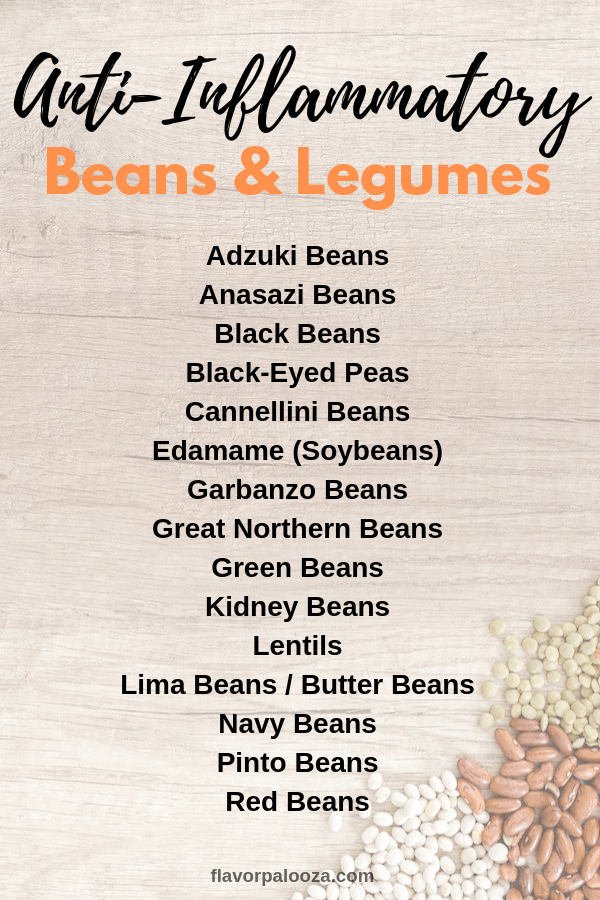
Anti-Inflammatory Proteins: Vegetarian + Seafood
Fatty fish like salmon, tuna, mackerel and sardines are some of the top choices in the anti-inflammatory protein category. Other proteins choices include omega-3 enriched eggs, natural cheeses, yogurt and lean meats, like skinless poultry. Plus, there are some vegetarian/vegan options listed below.
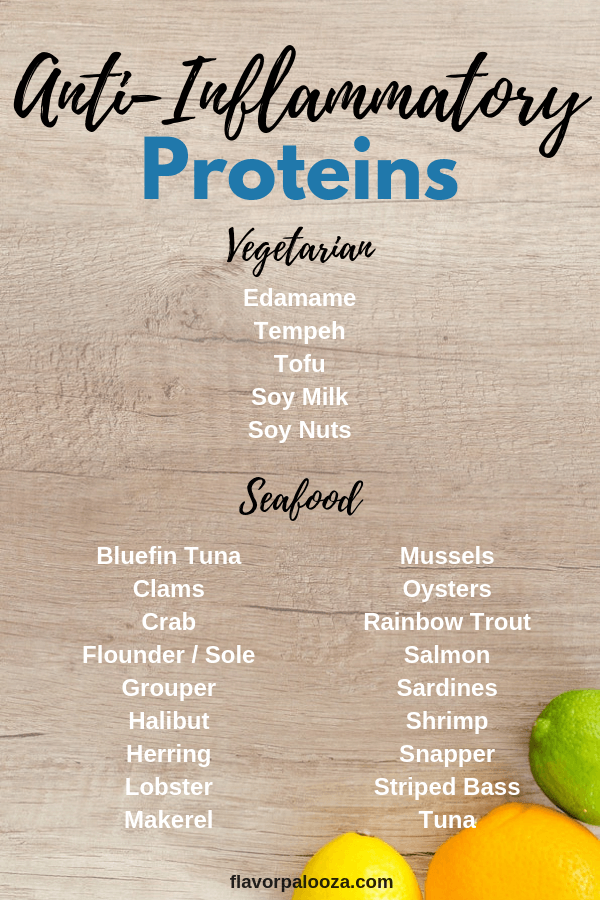
Anti-Inflammatory Fats & Oils
You should be getting 5 to 7 servings of healthy fats from the list below per day. Some top choices are olive oil, almonds, walnuts, hemp seeds and flaxseeds. Keep in mind that some of the foods below come in butters and oils, so additional items to add to your anti-inflammatory shopping cart include:
- Almond Butter
- Almond Oil
- Avocado Oil
- Cashew Butter
- Flax Seed Oil
- Hemp Seed Oil
- Peanut Butter
- Peanut Oil
- Sesame Seed Oil
- Sunflower Seed Butter
- Olive Oil
- Walnut Oil
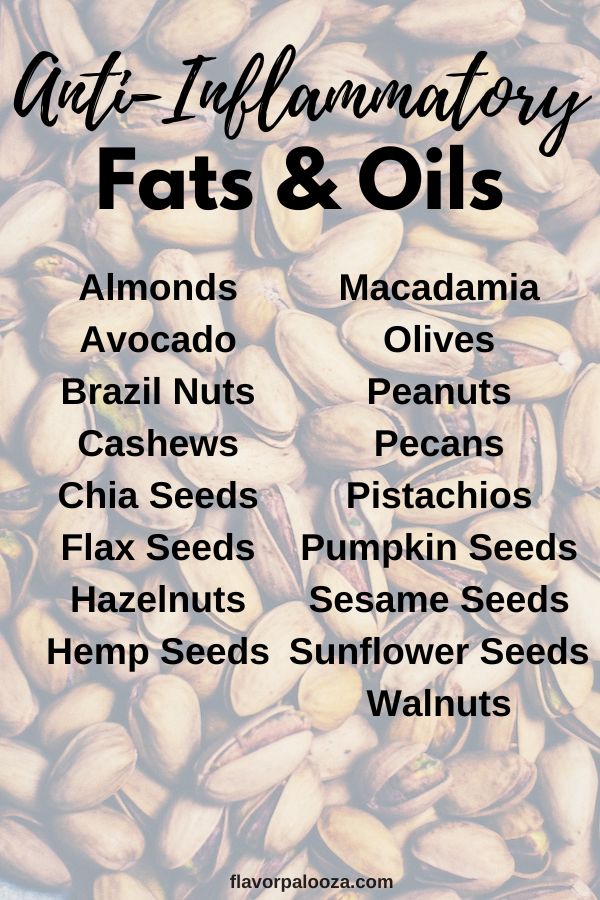
Anti-Inflammatory Herbs and Spices
Instead of relying on sugar and salt for flavor, up your spice intake! Some of the best choices are garlic, ginger, turmeric and cinnamon. Enjoy in unlimited amounts!
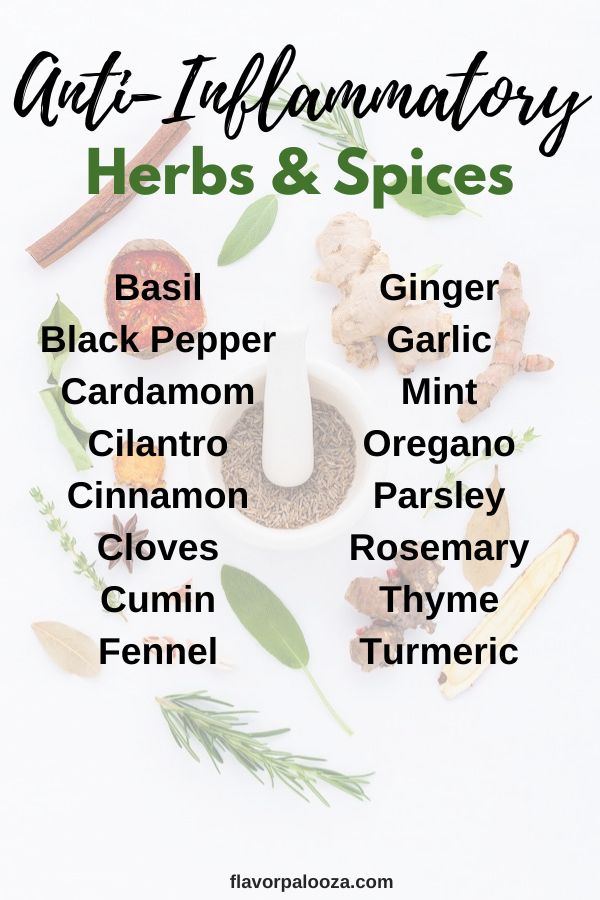
Anti-Inflammatory Sweets
- 70% or greater dark chocolate (sparingly)
- Whole Fruits
Anti-Inflammatory Beverages
- Water
- Tea – Green, White, Oolong and Herbal Teas (or, try this recipe for a delicious, anti-inflammatory Golden Milk Latte aka Turmeric Tea!)
- Red Wine (sparingly)
Hopefully you now have a better sense of what an anti-inflammatory diet is. We’ll be posting more anti-inflammatory recipes and resources on the blog soon, but in the meantime, check out my Anti-Inflammatory Diet board on Pinterest for some excellent ideas!
Sources: Harvard Health Publishing, Andrew Weil, M.D.

This is so helpful!! Thank you for taking the time to put this list together!
You’re so welcome! Glad you found it helpful!
This is so helpful! Thank you
Thank you for such a great resource to get me started with this new life change. Any way you would share your lists that break down the specific food type?
Thank you SO much. I’m starting this way of eating for life now!
I thought vegetables in the night shade family were inflammatory? For example, eggplant, peppers, tomatoes.
I appreciate the valuable information, without having to sit through a 2 hour video to find out the answers..
Thank you ,Marion
I had to correct the anti-inflammatory grain list you posted here. Corn is highly inflammatory. It contains high levels of Omega 6 fatty acids which are the source of a host of health issues. The other lists are very helpful. Thank you.
Thank you so much for the information and great graphics! I took screenshots of the graphics to use as quick reference. Bookmarking your site.
Thank you very much for all of your hard work and time in creating this list. It is appreciated 🙂